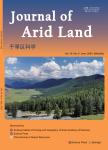Spatial distribution of δ2H and δ18O values in the hydrologic cycle of the Nile Basin
Spatial distribution of δ2H and δ18O values in the hydrologic cycle of the Nile Basin作者机构:School of Science and Engineering American University in Cairo Department of Geological Sciences University of Idaho
出 版 物:《Journal of Arid Land》 (干旱区科学(英文版))
年 卷 期:2015年第7卷第2期
页 面:133-145页
核心收录:
学科分类:08[工学] 081501[工学-水文学及水资源] 0815[工学-水利工程]
主 题:Nile River arid environment deuterium excess regional climate model uncertainty evaporation isotope effects
摘 要:Existing δ2H and δ18O values for precipitation and surface water in the Nile Basin were used to analyze precipitation inputs and the influence of evaporation on the isotopic signal of the Nile River and its tributaries. The goal of the data analysis was to better understand basin processes that influence seasonal streamflow for the source waters of the Nile River, because climate and hydrologic models have continued to produce high uncertainty in the prediction of precipitation and streamflow in the Nile Basin. An evaluation of differences in precipitation δ2H and δ18O values through linear regression and distribution analysis indicate variation by region and season in the isotopic signal of precipitation across the Nile Basin. The White Nile Basin receives precipitation with a more depleted isotopic signal compared to the Blue Nile Basin. The hot temperatures of the Sahelian spring produce a greater evaporation signal in the precipitation isotope distribution compared to precipitation in the Sahara/Mediterranean region, which can be influenced by storms moving in from the Mediterranean Sea. The larger evaporative effect is reversed for the two regions in summer because of the cooling of the Sahel from inflow of Indian Ocean monsoon moisture that predominantly influences the climate of the Blue Nile Basin. The regional precipitation isotopic signals convey to each region's streamflow, which is further modified by additional evaporation according to the local climate. Isotope ratios for White Nile streamflow are significantly altered by evaporation in the Sudd, but this isotopic signal is minimized for streamflow in the Nile River during the winter, spring and summer seasons because of the flow dominance of the Blue Nile. During fall, the contribution from the White Nile may exceed that of the Blue Nile, and the heavier isotopic signal of the White Nile becomes apparent. The variation in climatic conditions of the Nile River Basin provides a means of identifying mech



